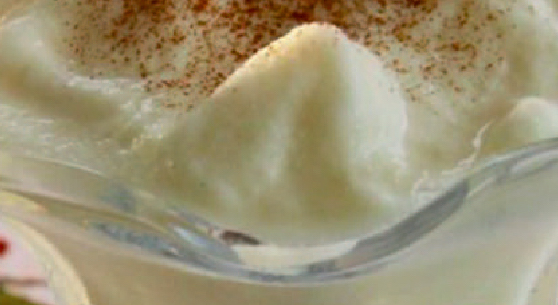Story and Photos by Mike Yawn

Dan Dunn exudes energy, both while creating and discussing his art. While his finished product is most often a traditional canvas painting, he incorporates music, joy, and action into his art, making him as much of a performance artist as he is a painter. A graduate of SHSU and a Houston resident, his performances have been showcased on “Ellen,” “The Rachael Ray Show,” “The Super Bowl Pre-Game Show,” and “Late Night With Jimmy Fallon,” even as he maintains a busy international touring schedule punctuated by regular work for charitable causes.
Where did you grow up?
I was born in Houston, and my father worked for an oil company. He transferred to California when I was about five, and we lived there until I was ten. I loved it. I didn’t know about gangs and pollution; all I knew was we lived between Disneyland, the ocean, and the mountains, and that was pretty fun in the 1960s.
Did you stay out of trouble while you were in Los Angeles?
I did well in California, but I had trouble adjusting to Texas schools when we moved back. I think I probably have ADD, although I was never tested. I fell behind in Texas, and I became more and more frustrated. I flunked ninth grade, which was humiliating. I was “Danny Dummy,” always behind, always asking stupid questions. Eventually, I got suspended from school.
My dad took me to a counselor who gave me a lot of tests. The counselor said, “Your son is in the top of the nation in art and abstract reasoning. I can’t tell you what to do, but if he was my kid, I’d get off his back and send him to art school.” That changed my life. From that point on, I had a purpose and knew I was good at something. I focused on that, and with the help of my church and my community, I was able to get my life together. I began making good grades, I ran track, I performed in plays, and I sang in the church choir. I had a different life.

Tell us about attending SHSU.
I got in by the skin of my teeth, and I had to take some additional courses. But I came in at a good time. It was a good group of people. The faculty, even those in their 50s, 60s, and 70s, had a true joy for art. I found my people there at SHSU in the 1970s.
Harry Ahysen, who was the State Artist of Texas in 1980-1981, taught you at SHSU, and he was known for painting quickly. Did that have a particular influence on you?
He was definitely an influence. Harry could do a painting in an afternoon while others would work for weeks. The impressionists would also paint quickly. It shouldn’t be thought of as an easy way out; it’s a skill. Probably the largest influence on my speed was working at Astroworld. It started as a summer job in 1977, drawing caricatures. I loved it. I developed a shorthand. This is the way to draw a nostril, a nose, or an upper lip. The faster you could work, the more people you could work for.
I got paid a commission of 25 percent. When I started, the caricatures sold for about $2.00, so I got about 50 cents. Later, the cost of the caricatures was raised to $4.00, so we got $1.00 for each one sold. One summer in the 1970s, I cleared $1,600 in a month. I worked with some talented people at Astroworld. Bill Hughes went on to illustrate books for George Lucas, and now he’s a filmmaker. I also worked with Jeff Martin, who went on to work on “The Simpsons,” and he wrote for David Letterman and “Boy Meets World.”
Dunn worked for almost a decade at Astroworld, working part of the time for Cindi Harwood Rose, a prominent businesswoman in Houston and a leading silhouette artist. He later began a graphic design firm with partners for a few years, but was most successful during this period as the co-owner—with his wife Cindy—of Caricatures Ink. Dunn employed up to 12 artists, working at corporate meetings and other events.

When did you begin true “speed painting”?
The genesis came in 1989, when I saw Denny Dent on David Letterman. He blew me away. As I was watching it, I yelled to my wife, “Look at this guy. He invented a new kind of rock and roll!”
That got me thinking about it, and it just sort of percolated. Eventually, I rented a mini-warehouse, and I started rehearsing speed painting. I wanted to make it the centerpiece of what I did.
Dunn’s first public speed painting was a July 4th performance at The Woodlands, which proved to be a fan favorite. That led to a performance on Houston television, resulting in an Atlantic City show—Joan Rivers did the weekends; Dunn did the weekdays. It also produced some good video clips…
Your daughter is at least partially responsible for your success.
One day my daughter Rachael, who was 14, put video of my Atlantic City show on YouTube—I didn’t know how to do that. This was spring of 2007, when YouTube was pretty new, and the video went viral, with millions of hits.
It was exciting. When I signed onto YouTube, I got a notice saying, “Congratulations! You have the 45th most viewed video on YouTube.” Next thing you know, we did 100 cities and 11 countries in 12 months. But, I was still green in show business, and I made so many mistakes. Fortunately, I had a good manager and tour manager, and they helped me refine things. We’re still growing strong more than a decade later. I’ve done my speed painting on “Ellen,” on “Late Night With Jimmy Fallon,” the “Super Bowl Pregame Show,” “National Geographic,” as well as television in Japan and Turkey. It’s insane!

Have you given Rachael 10 percent of your earnings?
No, but I paid for her college. She earned her degree in economics, then she went and hiked the Appalachian Trail—all 2,100-plus miles—and is now working as an accountant for an entertainment agency.
How are your other four children doing?
They are amazing. My oldest, Matt, is managing an electrical supply warehouse in Houston; he’s a mechanical genius. My oldest daughter, Danielle, is a Montessori teacher and will be teaching in Mexico City beginning this fall. She earned her degree at SHSU in history, and she is one of those people who reads eight books a week while holding down a full-time job. Our middle daughter, Caitlyn, finished her BA in nutrition at UT and has taken her MCAT. And my youngest, Harvey, is married, and he and his wife are doing well. No one is dead or in jail!
We’ve been lucky. We raised the kids with more love than with structure.
Artists often take a hit during recessions. You had a career year in 2007, but then the “Great Recession” hit.
My sales fell to half of what they were in 2007, but that was still higher than they have ever been before. I was more fortunate than a lot of my friends, who had trouble keeping their careers going during those lean years.
What are your favorite subjects to paint?
For speed painting, you have to paint icons that everyone in the audience will know and “get.” With charity galas, it not only has to be a subject everyone will know, it also has to be someone people will buy. We’ve raised three million dollars for charity. I love to paint Ray Charles and the Statue of Liberty. I’ve got good routines for them, and they will end up perfect—or, at least good. The audience will respond. I’ve spoken to Charles’ family, and they were happy I was painting him. I met his daughter Sheila, and I was able to give her a painting.
In your performances, you evoke the silent comedians. Were you inspired by them?
I was, but in terms of formal training, what I did was work with a mime to help me communicate things non-verbally.
We put music to all our shows, but I should have already mentioned my symphony shows. I did three nights in 2015 with the Houston Symphony, and they were near full capacity each night. The work was pretty difficult. I can’t perform for a full hour and a half, so I break it up into different “performances,” with each performance synchronized to music and the symphony playing in between each of the art performances. I did one performance behind a piece of glass, and I painted in black light. In one performance, I painted a landscape of “Starry Night” in five minutes to “Pavane for a Dead Princess.” We also did a couple of performances with the National Symphony in Washington, DC.

In most of your work, there is a “reveal.” You keep the audience guessing until the last minute.
That’s the heart of the performance. I typically begin practicing by looking at a photo on the internet. I paint it over and over again, until it becomes part of my muscle memory. For Ray Charles, I begin with the cheekbone, then I move up to his cheek and his ears. It becomes a rhythm. With Charles, it’s the teeth. When I do the teeth—last—they get it, and the audience flips. It’s the reveal.
Does it work on television as well as with a live audience?
Yes! The television shows have live audiences, and each has a different dynamic. My first show was Carson Daly, and during the rehearsal show, he was in the audience with a ballcap and sunglasses, so I didn’t meet him until the day we were performing with the crowd. They have applause signs, and they know how to pump the crowd up. It went over well, and that show helped us get on “Ellen.”
If I recall correctly, that almost didn’t work out.
True. I was so nervous when I was there that I didn’t paint Ray Charles’ teeth in rehearsal. And, as I mentioned, that’s the reveal. Without it, you can’t tell who it is. They decided to pull me, but my manager worked with them, indicating that I had been flying all over the world, I was tired and had just flown in that day. They eventually agreed to put me on a day later. That ended up going well, and it got me on the other shows. But, because I had to delay my “Ellen” appearance by a day, I had to cancel my appearance at the University of Virginia. I never cancel, but I felt like I had to come through on “Ellen.” The people at the University of Virginia were very understanding, and I ended up coming back to perform for them with no charge. They have brought me back nine times since then.
Is it fair to say you are a performance artist?
I am absolutely a performance artist. I am performing all the time, sometimes more than 200 times a year. When I practice, I’ll often make videos of myself, and I assess them. I have tricks and routines. Sometimes, I become almost manic. I want to produce art while also performing. I’ve had some killjoys try to squelch my joy and say, “Can you talk less and draw more?” But I get a lot of joy from what I do, and the audience and those who buy my art seem to get joy from it, too…so I keep doing what I do.



